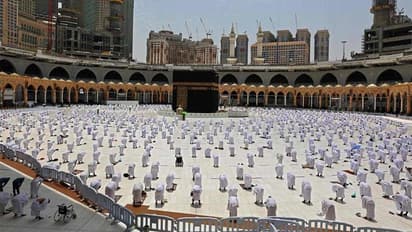Ramadan 2022: A look into Iftar traditions from across the world
Published : Mar 31, 2022, 05:41 PM IST
Read on to get an insight into some of the most fascinating Ramadan traditions from around the world.
Explore the latest Lifestyle News covering fashion, wellness, travel, Food and Recipes, and more. Stay updated with trending Health News, fitness tips, and expert insights to inspire your daily living. Discover personalized lifestyle trends that keep you stylish and informed. Download the Asianet News Official App from the Android Play Store and iPhone App Store for everything that adds value to your everyday life.
